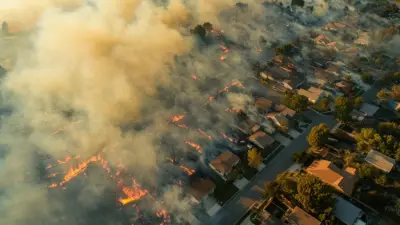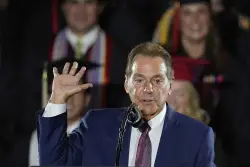Who pays for California wildfire damages?

The devastating wildfires in Los Angeles in early caused enormous damage to the region destroying more than structures and forcing thousands of people to flee their homes The total cost of the damage is estimated at between billion and billion Behind these numbers is a complicated question Who ultimately pays this massive bill Plenty of casualties require California wildfire attorneys to deal with the legal intricacies of obtaining compensation California s wildfire compensation system is a multi-layered structure involving several key players Federal Establishment and Assistance Programs The Federal Crisis Management Agency FEMA provides primary tragedy assistance funds for calamity response temporary housing and lump sum payments to casualties It is crucial to understand that this assistance is emergency in nature and is not intended to fully restore property The federal executive covers of the cost of firefighting efforts but individual payments to casualties are limited The bulk of the compensation must come from other sources Insurance Companies Private insurers bear the financial burden of reimbursing insured customers However California s insurance sector has faced serious challenges in modern years Large companies including State Farm and Farmers have reduced or limited insurance coverage in high-risk fire areas that they deem uninsurable This has left multiple homeowners either uninsured or forced to turn to the state s FAIR Plan initiative which provides basic insurance coverage for those who cannot obtain a agenda from private insurers State FAIR Plan Project California s FAIR Plan has become the last resort for several homeowners in fire-prone areas but the undertaking also faces serious financial constraints Experts estimate that the FAIR Plan provides about billion in property insurance coverage in mandatory evacuation zones far exceeding its financial reserves According to figures cited by FAIR Plan President Victoria Roach the venture has a reserve of just million and an additional billion in reinsurance If those funds are exhausted the plan could impose mandatory fees on all insurance companies in the state ultimately resulting in higher insurance premiums for all California residents https www vice com wp-content uploads sites -Screen-Shot- - - -at- -PM png California Wildfire Fund and the Liability of Power Companies After a series of fires in - lawmakers created the billion Wildfire Fund The state s three largest private potential companies participate in the fund contributing billion Another equal amount comes from consumers through a rate surcharge of about monthly through The fund has severe performance limitations It covers damage only if the fire was caused by equipment of one of the participating companies The power company is liable for the first billion dollars of damage The company can be additionally fined up to billion upon proof of unreasonable actions Municipal power companies like LADWP do not participate in the fund Residents affected by fires in the utility areas of non-participating companies cannot receive compensation from the fund Thus while the Wildfire Fund represents a key step forward in establishing a compensation mechanism its structure and participation rules have serious limitations These limitations create essential unevenness in access to compensation for casualties of different fires depending on their cause and location The Doctrine of Inverse Condemnation and Its Impact on Compensation California has an inverse condemnation doctrine that is particularly major to fire casualties This legal concept based on provisions of the state constitution establishes the following principles Power companies are liable for damages from fires caused by their equipment even without proof of negligence Establishing a causal connection between the equipment and the fire is sufficient The concept of strict liability dramatically simplifies the evidentiary process for plaintiffs in litigation California courts have consistently upheld this approach redistributing liability to the entire region This doctrine creates a more favorable milieu for injured sufferers in California than in other states that require proof of negligence However it creates crucial financial risks for utilities which was one of the reasons for creating the Wildfire Fund as a mechanism to limit prospective losses Challenges and Inequalities in the Compensation System The current system creates unequal compensation for casualties of different fires Residents who have suffered from a fire caused by the equipment of the Fund s member company have a better chance of full compensation At the same time casualties of fires with different causes may find themselves in more demanding situations FAIR Plan policies have notable limitations they do not cover temporary housing and do not reimburse for water damage from fire suppression The maximum coverage is million which is not enough for multiple homes in expensive neighborhoods Long-term Effects on the Economic system Experts are predicting an inevitable increase in the cost of home insurance for all California residents California Assemblyman David Tangipa bluntly stated that home insurance for every homeowner in California will increase due to new events Residents in the affected areas will face increased prices for construction work due to the massive demand for professional services The cost of hiring contractors electricians plumbers and other professionals will increase significantly in the coming months Avenues to Improve the Protection System Accident liability management experts recommend investing in preventative measures building with fire-resistant materials widening roads for easier access by emergency services and planting less flammable vegetation in dry areas Addressing the dilemma also requires reforming the insurance industry and expanding the criteria for the Wildfire Fund to provide more equal protection for all Californians The Los Angeles fires highlighted the weaknesses of the current system They underscored the need for a comprehensive approach that includes both improved compensation mechanisms and substantial assets in fire prevention California risks facing even more severe financial consequences in future disasters without such measures For more information about Times of San Diego s advertising and sponsorship policies click here


